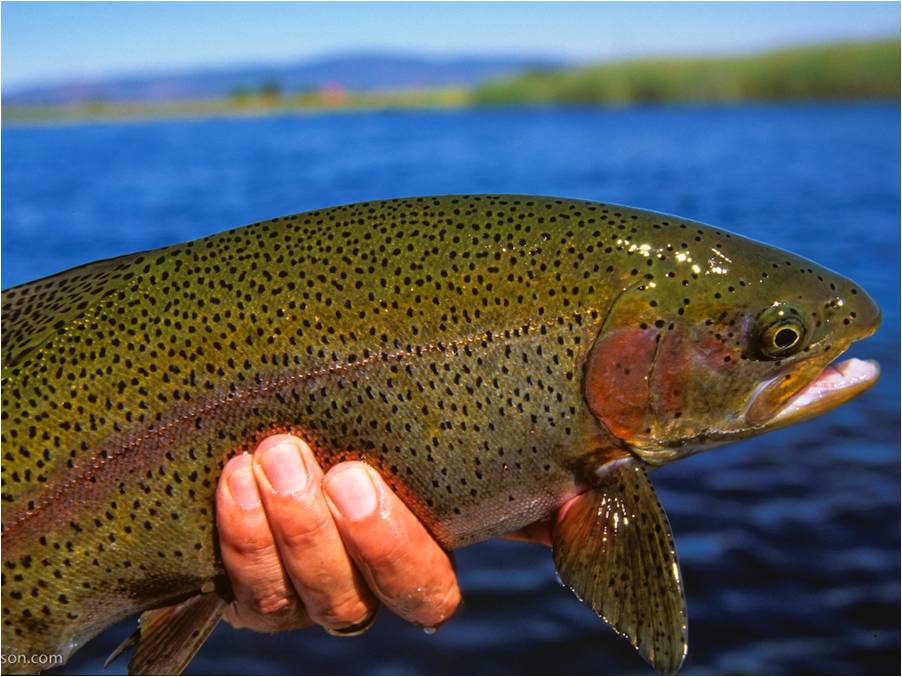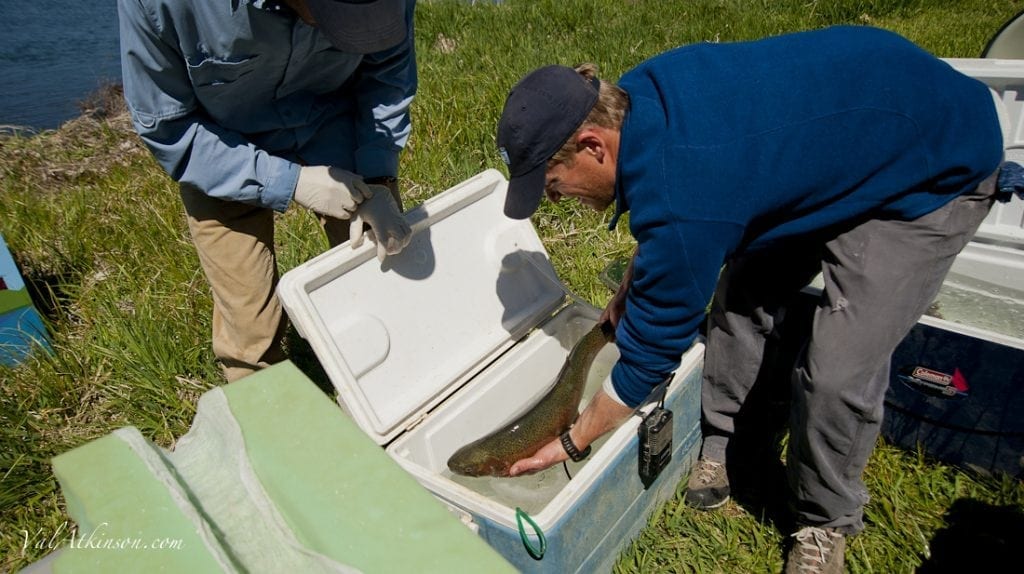FRC Tags 500 Fall River Wild Trout for Monitoring
Watch Video on Fall River PIT Program! https://vimeo.com/65069455

Ever wonder where and when Fall River wild trout spawn? Or how far they migrate throughout 25 plus miles of interconnected springs, lakes, and river? Ever wonder where and when Fall River wild trout spawn? Or how far they migrate throughout 25 plus miles of interconnected springs, lakes, and river How important is Lava Creek, Spring Creek, Big Lake, or Ja-She Springs to the overall survival of Fall River trout? Do all Fall River wild trout originate from the same genetic line, or do we have distinct populations spawning at different times throughout the year?
So many questions and so few answers: until now. FRC, UC Davis, and California Trout launched on April 23 the Fall River’s first Passive Integrated Transponder (PIT) Monitoring Program.
The primary purpose of the program is to document scientifically when and where Fall River wild trout spawn. The research will be used to prioritize habitat areas for restoration and improve resource management strategies.
Passive Integrated Transponder (PIT) Program
Made possible with grant funding from Orvis—and technical support from our partners at the UC Davis Center for Watershed Sciences, the California Department of Fish and Wildlife (CDFW), and California Trout—FRC coordinated an effort to tag 250 fish with tracking chips. We’ll tag another 250 fish throughout the summer and fall.
The tracking chips work much like the FasTrak System commonly used for electronic toll collection on bridges throughout the bay area. About the size of a grain of rice, the chip is inserted with a syringe in the abdominal cavity of the fish. Antennas are then placed strategically throughout the greater Fall River system: ideally at the mouth of key tributaries or lake systems, but also on the numerous bridge structures in throughout the mainstem river. When a tagged fish swims near an antenna, a data logger reads the individual chip code allowing researchers to track movement and location. During the tagging process, each fish is also measured and a small genetic sample clipped from the caudal fin.
Objectives of the PIT Program

Credit: Val Atkinson
As mentioned above, the objective of the program is to identify where and when fish spawn so that we can prioritize these areas for restoration. The program will also analyze the genetic makeup of Fall River wild trout to determine whether multiple genetically distinct populations exist within the same system.
We already know that Fall River wild trout are unique because they spawn for a much longer period than most trout populations. Most populations spawn in the spring months as run-off begins to tail off and water levels begin to drop.
This life-history strategy ensures that their eggs and fry won’t be flushed downstream by an unexpected high water event. Fall River trout, however, don’t have to worry about flooding because spring fed steams tend provide steady, more predictable flows and temperature. According to Carson Jeffres at UCD, this allows our Fall River populations to spawn for an unusually long period: approximately nine months each year. Consequently, it’s possible that this population actually consists of multiple, genetically unique populations. If true, resource managers may choose to modify existing management strategies to protect spawning fish at specific times throughout the year.
Watch Video on Fall River PIT Program! https://vimeo.com/65069455
